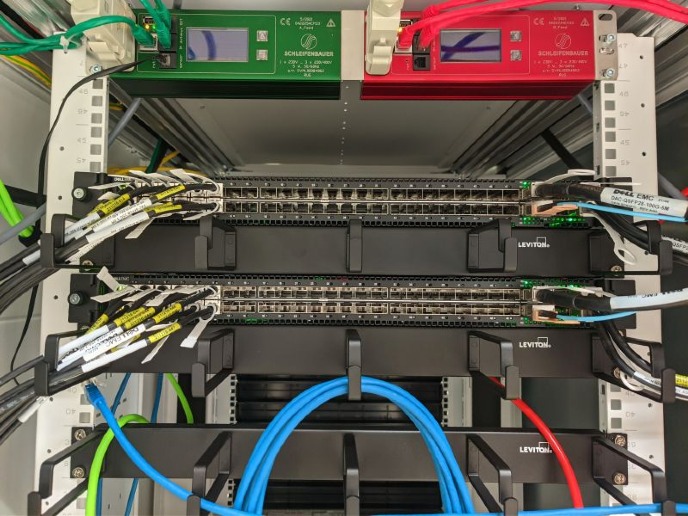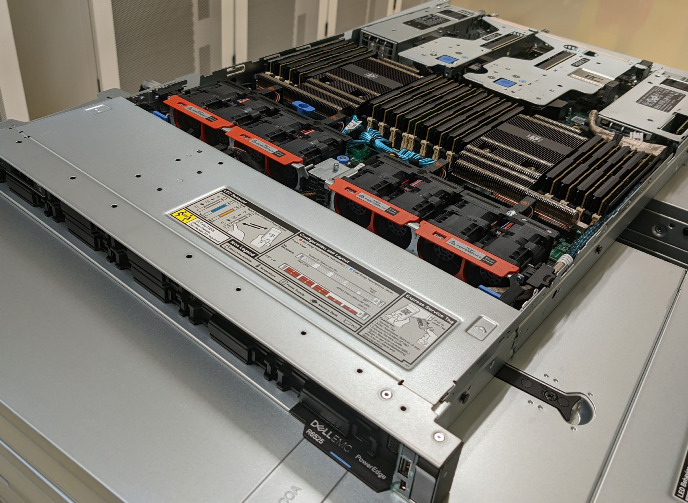Improved Hábrók computing cluster increases computing powers of researchers
In many research projects, UG academics hit the boundaries of computing. They have to deal with increasing amounts of data to be processed and the corresponding necessary computing power. To execute large-scale computations that cannot be achieved by a single computer, researchers at the University can use the Peregrine cluster. After seven years, this computing cluster has reached the end of its life, and will soon be replaced by a new computing cluster called Hábrók.
The Hábrók cluster, delivered and co-designed by Dell and Bossers & Cnossen, will be built and tested over the coming months, in the Coenraad Bron Center, the new high performance computing (HPC) datacenter at the UG. After the testing phase and the transfer of Peregrine data to Hábrók, the new cluster is expected to be officially ready for use in the last quarter of this year.


Multitude of computing power and storage capacity
In Norse mythology, Hábrók is described as the best hawk. This name emphasizes that the system is an improved version of the existing Peregrine cluster.
Using the newest hardware, the Hábrók cluster will ensure a multitude of computing power as well as quadruple the storage capacity from 500 TB to 2 PB. Every node in Hábrók will have its own processor, memory, and storage. The fast local storage will ensure a higher processing speed and offer a solution for bottlenecks in the current system. Every node in the cluster will be equipped with a higher memory, and thanks to the special ‘big memory nodes’ -each with a 4 TB memory- more memory-intensive computations will be able to be executed. Another important upgrade involves the modern graphics processing units (GPUs), which will deliver better performances, including for the processing of large amounts of training data for the benefit of machine learning models. Finally, the Hábrók cluster will operate in a cloud environment. A significant advantage of this is that maintaining and expanding the cluster will be considerably easier and quicker. New nodes will be able to be developed and added simply at a central level and new functionalities will be easier to implement.
These advanced computing facilities are generally available for academic research at the UG and are used in various research projects, for example in life sciences, digital humanities, and astronomy.
Want to know more?
More (technical) specifications and information on the use of the computing cluster can be found on the high performance computing webpage. Or take a look on Iris, the portal containing information on University IT services. Iris also includes information on requesting access to the computing cluster.
| Last modified: | 04 October 2024 12.42 p.m. |
More news
-
24 March 2025
UG 28th in World's Most International Universities 2025 rankings
The University of Groningen has been ranked 28th in the World's Most International Universities 2025 by Times Higher Education. With this, the UG leaves behind institutions such as MIT and Harvard. The 28th place marks an increase of five places: in...
-
05 March 2025
Women in Science
The UG celebrates International Women’s Day with a special photo series: Women in Science.
-
16 December 2024
Jouke de Vries: ‘The University will have to be flexible’
2024 was a festive year for the University of Groningen. In this podcast, Jouke de Vries, the chair of the Executive Board, looks back.
